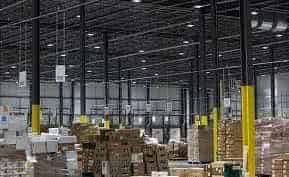Accounting
Business Process Management
Tax Solutions
Are Bots Taking Over Your Tax Accounting?

There’s no doubt about it: Software robots, or “bots,” are on their way to an accounting department near you. A recent Deloitte poll showed that more than half of finance, accounting and other professionals say their organizations plan to leverage robotic process automation (and other technologies) for financial and accounting processes in the year ahead. And industry conferences confirm that interest — one recent event I attended dedicated more than half of its programming to bots. It’s no wonder, as tax automation promises unprecedented levels of efficiency and cost savings. It also has the incredible potential to unlock greater value from accounting teams.
Ways to Apply Tax Automation
Interest in tax automation is high, but a lack of knowledge about how to best use accounting bots is holding people back. (At the conference mentioned above, I’d estimate that only about 1% of the attendees were using it.) Most executives are still trying to understand how robotic software would play into their existing processes as well as searching for the right opportunities for process automation.
Automating Bill Payments
Here’s an example of what automation might look like for bill payments, a time-intensive activity in tax accounting:
- The process starts with data gathering, which usually requires significant human effort. Bots extract data — amounts due, due dates, account numbers and payees — from bills and input it into a software application. Humans only need to intervene when the bot has “low confidence” in the data it generates.
- Next, bots match bills against expected accounts. For example, let’s say you have a bill for an account number of 123. When a bill arrives matching that account number, a bot assigns the associated data to that account in the system. Also, programming the bot to follow specific rules is another option. For instance, one that states the due date must be within a specified range of expected payment. The bots then import an image of the check and the associated data into your bill management system.
- Finally, bots are able to review and approve the bills. Let’s say that you’ll allow bots to approve all bill payments of less than $50,000. If a bill meets that specification, bots initiate the approval process, checking if the amount is like an amount paid last year. Once validated, the bot sends the bill off for automated payment.
Automating Property Tax Billing
For property tax billing, tax automation software already exists. Here’s how it works:
- An automated data entry application uses bots to extract data points from property tax bills. Low-confidence data escalates to humans for completion.
- Bots automatically import data into RPA-enabled tax management software, which then matches documents and data to property tax collector accounts. The documents must have matching account and collector numbers, and payment dates must be within expected ranges.
- Bots then review and approve property tax bills. In property tax, workers calculate amounts due ahead of bill receipt by using the assessed value and tax rate of jurisdictions. That makes it possible to create rules for the bots around bill approvals.
How to Get Started Using Accounting Bots
There are essentially two paths to implementing tax automation: Either purchase software that includes robotic process automation (RPA) technology or build an accounting bot yourself.
If you’re looking for a simple way in—one that lets you start reaping the benefits of bots immediately—then look for software that has the technology built-in. The software company has already done all the work for you, saving you time and money. This method is also a good way to see how automation applies to your accounting processes. It also shows how it will impact your workflow.
But there are cases where companies may decide to create their own accounting bots. If you’ve identified a specific use case for automation that an existing software doesn’t already address, this might be the path for you. There are several robotic process automation vendors that can help you build a software robot. It’s just a matter of finding one that’s a good match for your needs.
There’s More Than One Way to Think About Bots
Statistics about the number of jobs at risk from automation are heightening the fear about bots. However, they only tell a part of the story. Certainly, accounting bots will impact your team, allowing you to complete more work using fewer people. And for some organizations, that will be the main goal of tax automation—to reduce headcount, thereby reducing costs.
But that perspective limits organizational growth. Today, businesses search for efficiencies and strategic cost reductions that will help them outperform the competition. Cost-cutting alone won’t have a lasting impact. The use of bots in accounting helps realign workforces in ways that maximizes employee skills and talent. This allows existing workers, who once spent most of their time on data management tasks, freedom to make more high-level, operational decisions. Using bots also gives workers the opportunity to develop new competencies regarding technology. (For property tax practitioners, that means looking for ways to reduce tax liability rather than doing data entry.) By reframing your team’s existing job roles, you’re fostering a more valuable work product. You’re also giving your company a way to grow without the need for additional hires.
One of the best change management strategies I’ve seen regarding the use of bots was from an executive who positioned tax automation as a means of revenue growth, with one condition attached: there could be no reduction in headcount. He’s one of a growing number of finance and accounting leaders who are seeing, and using, process automation in the intended way—to help people work more like people than robots.
Photo courtesy of Pexels user Pixabay






